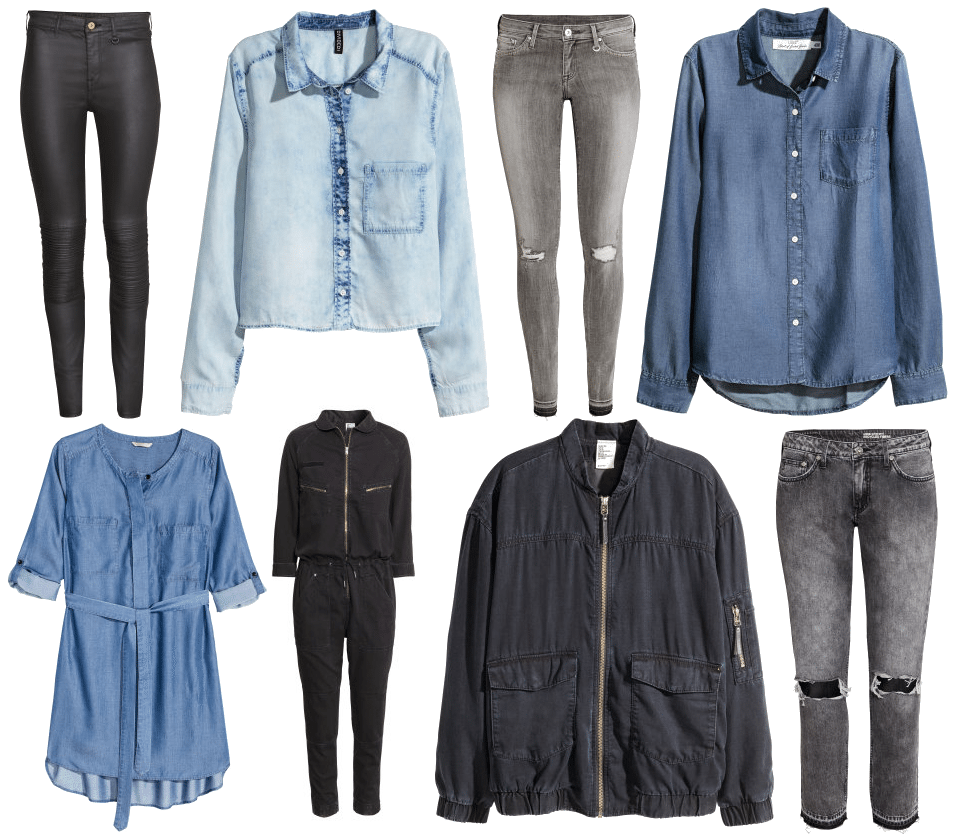H&M have internally been working with sustainability for more than 25 years, which is about making clothing production sustainable all the way from the cotton fields to transportation and the stores. The reason that H&M hasn’t been talking about this until five years ago, is that they wanted everything to be in place before they started telling everyone.
So far 20% of the production of the regular H&M collections is sustainable and besides that they have a 100% sustainable production on their sustainable collections, Conscious, Conscious Exclusive and Conscious Denim. H&M’s future goal for sustainable production is to have all cotton styles come form sustainable, organic sources in 2020.
H&Ms Garment Colecting Inivitaive launced in 2013, where costumers were invited to drop off their old clothes in boxes around all H&M stores. This was supposed to close the loop, by having consumers help making fashion more sustainable – when new clothes were bought, old were recycled or reused.
But where do all this used clothes go? And what are they used for?
- The clothes collected through the Garment Collectng Initiative in Denmark is picked up by the trucks that deliver new collections and drive it to Germany where the clothes are sorted.
- 40-50% is good enough to be used again and is sent to charity shops in eastern Europe.
- Clothes too dirty or with holes in it are use din other ways. They can become clothes for mechanics, car insolation and teddy bear filling. Clothes that can be broken down to their fibres are reused in for example the Conscious Denim collection, where the jeans are partly made from recycled cotton fibres and new, organic cotton.
- Even socks with holes in them and dirty t-shirts that cen’t be resold in charity shops can be put in the Garment Collecting Initiative boxes at H&M and recycled.
The Conscious Collection was launched at H&M as proof that sustainable clothes don’t have to be all beige, itchy and poorly designed – and at reasonable prices. The clothes in the Conscious Collection are produced by materials like organic cotton and recycled plastic bottles that is turned into polyester.
H&M has used the Conscious Collection to experiment with developing sustainable ways to produce materials that can be used in the non-“Conscious” collections in H&M, when the production method is fully developed. They also try to push productions on new materials that usually aren’t produced sustainably or organically, like organic silks. By developing the production of materials like these, H&M can, with their big budgets and huge orders, make it attractive for the textile production companies to expand their sustainable productions.
Once the Conscious Collections were placed together in the H&M stores, but lately they’ve started mixing it with the rest of their collections, so that shopping sustainably isn’t necessarily a choice, but something you can end up doing without noticing. If you want to shop sustainably by choice, just go to H&M’s website and choose Conscious!

H&M’s biggest amount of work on sustainable production has been about denim, which is incredibly polluting and which uses enormous amounts of water. One single pair of regular jeans can cost up to 12.000 liters of water in production and dying. So what did H&M do to solve this problem and save water when dying their denim?
- To make the denim production more sustainable, H&M especially uses their Garment Collecting Initiative. The sustainable denim collection is, so far, the only one H&M produces using handed in clothes, breaking old jeans down to the fibres and adding new, organic cotton to keep the fibres together.
- H&M invests a lot in researchers, who work with finding more sustainable ways to dye denim, to make the possibility of initiating larger productions of denim dyed in less watery ways. Right now, a new method of dying denim is being developed – the textile is put into a pressure chamber along with textile dye, and using CO2 and vacuum in the chamber, the denim absorbs the dye. The CO2 is recycled multiple times over.
- H&M also started producing part of their regular denim sustainably integrating their new sustainable denim knowledge into the rest of their production.

- Conscious Exclusive is H&M’s exlusive, sustainable collection with big, beautiful gowns and cool, more elaborate styles. These are all produced in the same way as the regular Conscious stuff.
- Studio collections and designer collabs haven’t gone sustainable yet. These collections are sold out in a heart beat and are widely exposed int he media, but incorporating sustainable production here is a bit slow. Just like the regular H&M collections there might be used sustainable production methods, without it being the focus of the production of these collections. They do plan to incorporate more sustainable methods into these popular collections in the future.


